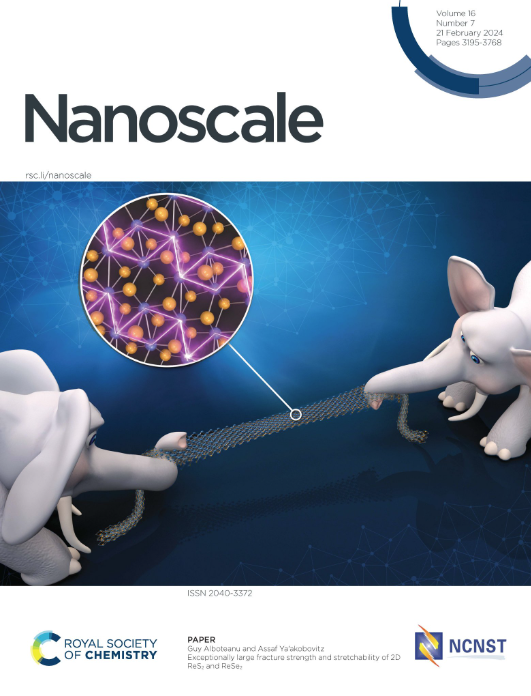Electronic structure tunability of carbon-based 1D-polymers combining cross-conjugation and nitrogen doping
IF 5.8
3区 材料科学
Q1 CHEMISTRY, MULTIDISCIPLINARY
引用次数: 0
Abstract
Quasi-one-dimensional polymer structures with extended π-electron systems stand out due to their remarkable application in light-emitting diodes and devices. Upon smart choice of their building units, such carbon-based organic nanoarchitectures provide excellent optoelectronic properties by tuning their dimensionality, atomic structure or intrinsic doping. Here, we generate and study three canonical cross-conjugated quasi one-dimensional chains with controlled nitrogen intrinsic doping, which is selectively introduced into their poly-phenylene backbones. By means of scanning tunneling microscopy and spectroscopy we corroborate that the cross-conjugation that break the chain linearity is exclusively responsible of the electronic confinement in the straight segments. Moreover, we demonstrate that the LUMO state exhibits similar spatial distribution for the cross-conjugated polymers independently of the pyridine content of the initial precursor. Despite this coincidence, the semiconducting character and other relevant electronic properties of the polymers are found to depend both on the chain morphology and on the precise position and number of doping nitrogen atoms synthetically introduced into the molecular precursors. We compare these results to related previous studies, which allows us to unambiguously validate the opto-electronic tunability upon the choice of the polymers’ building units.碳基一维聚合物结合交叉共轭和氮掺杂的电子结构可调性
具有扩展π-电子系统的准一维聚合物结构因其在发光二极管和器件中的显著应用而脱颖而出。通过明智地选择其构建单元,这种碳基有机纳米结构通过调整其维度、原子结构或内在掺杂来提供出色的光电性能。在这里,我们生成并研究了三个典型的交叉共轭准一维链,其中氮本征掺杂被选择性地引入到它们的聚苯乙烯骨架中。通过扫描隧道显微镜和光谱学,我们证实了破坏链线性的交叉共轭作用是导致直线段电子约束的唯一原因。此外,我们证明了交叉共轭聚合物的LUMO态具有相似的空间分布,与初始前驱体的吡啶含量无关。尽管这种巧合,聚合物的半导体特性和其他相关的电子性质被发现既取决于链的形态,也取决于合成引入到分子前体中的掺杂氮原子的精确位置和数量。我们将这些结果与相关的先前研究进行比较,这使我们能够明确地验证聚合物构建单元选择的光电可调性。
本文章由计算机程序翻译,如有差异,请以英文原文为准。
求助全文
约1分钟内获得全文
求助全文
来源期刊

Nanoscale
CHEMISTRY, MULTIDISCIPLINARY-NANOSCIENCE & NANOTECHNOLOGY
CiteScore
12.10
自引率
3.00%
发文量
1628
审稿时长
1.6 months
期刊介绍:
Nanoscale is a high-impact international journal, publishing high-quality research across nanoscience and nanotechnology. Nanoscale publishes a full mix of research articles on experimental and theoretical work, including reviews, communications, and full papers.Highly interdisciplinary, this journal appeals to scientists, researchers and professionals interested in nanoscience and nanotechnology, quantum materials and quantum technology, including the areas of physics, chemistry, biology, medicine, materials, energy/environment, information technology, detection science, healthcare and drug discovery, and electronics.
 求助内容:
求助内容: 应助结果提醒方式:
应助结果提醒方式:


